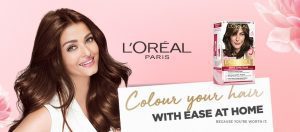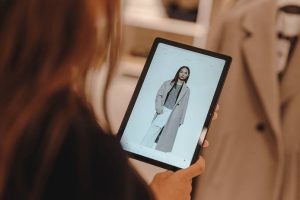Muji and Uniqlo are the pioneers of minimalist fashion yet their approach to design, collaborations, and sustainability differ in multiple ways. When making a choice between them, which brand would perfectly fit the criteria?

Uniqlo innovates within the framework of everyday wear. Image: uniqlo.com
Established in 1980, MUJI initially focused on offering simple, functional products that stripped away excess branding and packaging, to establish its quality over flashy marketing.
While both Muji and Uniqlo have mastered the art of offering high-quality products at accessible prices, a deeper look at their design philosophies reveals two distinct approaches. Where Muji focuses on stripping away excess to embrace pure functionality, Uniqlo innovates within the framework of everyday wear, making subtle yet impactful design choices. This juxtaposition between utilitarianism and modern design is what sets the two brands apart.
Let’s take a closer look at how these titans of minimalism stack up.
Table Of Contents
- Muji vs. Uniqlo: Approach to design
- Muji vs. Uniqlo: Collaborations
- Muji vs. Uniqlo: Market Positioning and Reach
- Muji vs. Uniqlo: Sustainability Initiatives
- Muji vs. Uniqlo: Which is the best brand for you?
- FAQs: How to Style Iconic Products from Uniqlo and Muji
Muji vs. Uniqlo: Approach to design
Muji’s design philosophy is deeply rooted in the concept of “no-brand quality goods,” where the products speak for themselves without bold logos or overwhelming patterns. The brand emphasises function over form, using natural materials and neutral color palettes to create timeless pieces that integrate into daily life.
Whether it’s their clothing line or home goods, Muji’s aesthetic is defined by its understated simplicity and practicality. Every Muji item feels like it belongs in a serene, clutter-free environment, designed to reduce life’s complexities rather than add to them.
Muji recently introduced a new apparel collection Labo, for fall winter 2024. Labo offers seasonal classics like structured outerwear, silk shirts, twill blouses, Yak wool pullovers, and cashmere turtleneck sweaters.
Richard Rappaport, Muji President of North America tells Forbes: “Utilizing cashmere in this context felt like a natural choice given the seasonality of the material as well as the luxe, timeless nature of the fabric,” he said. “Muji prides itself on creating wardrobe staples that are made to last, and this collection shares that same ethos, with fine materials such as yak wool and cashmere offering the exceptional comfort and quality that is a necessity for modern basics.”
In contrast, Uniqlo offers a more fashion-centric interpretation of minimalism. While the designs are sleek and functional, Uniqlo’s focus is on innovation and fabric technology. Its flagship ‘LifeWear’ concept offers clothing designed to make everyone’s life better i.e. simple, high-quality, everyday clothing, thought through with life’s needs in mind, and continually evolving.
Uniqlo’s parent company Fast Retailing calls this product development concept “Made For All” and aims to achieve it by respecting diversity. The “LifeWear” concept offers high-tech features like HeatTech for warmth and AIRism for cooling, all the while maintaining a sleek, minimalist appearance. Uniqlo’s design philosophy balances utility with current fashion trends in this manner, making it a go-to brand for shoppers seeking both utility and style.
Muji vs. Uniqlo: Collaborations
When it comes to collaborations, Uniqlo has built a formidable reputation for partnering with world-renowned fashion designers and artists. From Jil Sander’s sleek and modern aesthetic in the +J collection to partnerships with high-fashion brands like Theory, Uniqlo has successfully bridged the gap between high-end fashion and everyday wear.
Their collaborations also extend to pop culture, including artists like KAWS, and iconic franchises such as Star Wars and Marvel. These collaborations make Uniqlo a dynamic player in the fashion industry, continually offering fresh, limited-edition pieces to its consumers.
Muji, on the other hand, takes a more subtle approach to collaborations. Rather than teaming up with high-profile personalities, Muji tends to work with like-minded partners to further its core values of sustainability, simplicity, and functionality.
Their collaborations focus more on improving the efficiency or ecological footprint of their products rather than making bold fashion statements. For example, Muji collaborated with Gogoro to launch the “Recycling for Good” initiative in Taiwan, which encouraged people to recycle plastic waste at their stores, empowering them to take small actions toward building a more sustainable future.
Muji vs. Uniqlo: Market Positioning and Reach
In terms of market positioning, Uniqlo has established itself as a global retail giant, with stores spanning Asia, Europe, and North America. Its affordable price point and broad product range—offering everything from basic tees to winter outerwear—make it accessible to a wide audience.
Uniqlo’s aggressive expansion strategy has also helped the brand gain a foothold in competitive markets, including fashion capitals like New York, Paris, and Tokyo. The company’s strong digital presence has further fueled its growth, enabling it to reach an even wider global customer base.
Muji has a niche market appeal. Though the brand has a strong worldwide following for its home collections and lifestyle products, it has a smaller physical and digital footprint compared to Uniqlo. Muji’s products, while diversified, don’t have the same broad appeal as Uniqlo.

Muji has a niche market appeal. Image: Muji
Uniqlo’s fashion-centric clothing line. The brand’s focus on essentials and functional items caters to a more design-conscious demographic who appreciate simplicity and sustainability over trend-driven fashion.
Muji vs. Uniqlo: Sustainability Initiatives
Sustainability is increasingly becoming a factor in consumer decisions, and both Muji and Uniqlo have made strides to integrate eco-friendly practices into their business models.
Muji has long been a pioneer in sustainability. Its parent company, Ryohin Keikaku, has set a goal to reduce CO2 emissions by 50 percent by 2030. The first step has been to calculate Muji’s GHG emissions in Japan according to the GHG Protocol. Per its website: ‘To reduce our CO2 emissions… we’re working together with our partners to reduce the footprint of our stores, supply chain and product use.
That includes promoting energy conservation, improving energy efficiency and powering our work with renewables.’ Ryohin Keikaku also aims to use 100 percent renewable energy at all stores and install solar panels at all of their store facilities by 2030. Renewable energy is core to the emissions reduction strategy and they have installed solar panels at the Hatoyama Distribution Centre — with the potential to have a powerful impact.
Muji is making its products and packaging more sustainable by selecting materials responsibly and recycling materials to protect the Earth’s resources and pave the way for a sustainable, circular industry. Through the ReMUJI initiative, the team collects customers’ pre-loved clothes, towels and sheets, at some of their stores in Europe and Japan. The collected garments are either washed, over-dyed and turned into new products available as ReMUJI at certain stores, or recycled to use materials in our recycled fibres.
Uniqlo has also implemented several initiatives aimed at reducing its environmental impact. New clothes made by recycling limited resources are becoming increasingly visible in Uniqlo’s collections and the brand aims to switch approximately 50 percent of all materials used to recycled materials by 2030.
What’s more, Uniqlo supports the Responsible Down Standard (RDS) to protect and enhance the welfare of geese and ducks. As an international standard, RDS helps ensure that all aspects of the breeding and keeping of these animals are safeguarded. The common goal is to give traders and consumers more certainty when buying down products.

Uniqlo has implemented several initiatives aimed at reducing its environmental impact. Image: uniqlo.com
Muji vs. Uniqlo: Which is the Best Brand for You?
The choice between Muji and Uniqlo ultimately depends on your personal preferences and lifestyle needs. If you value minimalism at its purest, with a focus on sustainability and timeless design, Muji is likely the brand for you. Its commitment to quality over quantity and a serene, no-frills aesthetic make it ideal for those who prioritize functionality and simplicity in both fashion and home goods.
On the other hand, while looking for versatile clothing that blends practicality with style, Uniqlo is hard to beat. With its innovative fabrics, wide range of products, and frequent collaborations, Uniqlo offers something for everyone.
FAQs: How to Style Iconic Products from Uniqlo and Muji
- How do I style Uniqlo’s Ultra Light Down Jacket?
Pair the lightweight jacket with slim-fit jeans and a sweater for a casual look. Add a scarf and boots for a more polished winter outfit.
- What’s the best way to wear Muji’s Linen Shirts?
Muji’s linen shirts work well with chinos or tailored shorts. You can also layer them under a lightweight cardigan for a relaxed yet refined look.
- How can I style Uniqlo’s HeatTech Tops?
Wear them as base layers under a denim or leather jacket for a sleek, urban look. You can also pair them with joggers for a comfortable, athleisure vibe.
- What outfits go well with Muji’s Organic Cotton T-shirts?
Tuck them into high-waisted trousers for a minimalist, effortless look. For a more casual feel, wear them loose with jeans or shorts.
- How do I elevate Uniqlo’s Wide-Leg Pants?
Pair with a fitted blouse or a cropped top to balance out the wide silhouette. Adding a belt and heeled boots can give the look more structure.
- What’s the best way to style Muji’s Wool Sweaters?
Layer them over a collared shirt for a preppy look, or wear them solo with tailored pants for a more minimalist outfit. Neutral colors work best to keep the look understated.
- How can I incorporate Uniqlo’s AIRism collection into everyday outfits?
Use AIRism tops as base layers for workwear outfits or gym attire. Their moisture-wicking fabric makes them great for layering under dress shirts or jackets.
- What’s a versatile way to wear Muji’s Knitted Cardigans?
Knitted cardigans can be styled with a simple white tee and jeans for a laid-back, cozy look. For work, pair them with a blouse and straight-leg trousers.
- How can I style Uniqlo’s Graphic Tees?
Uniqlo’s graphic tees work well with casual outfits like jeans and sneakers. For a more edgy look, layer them under a blazer or denim jacket.
- What are some outfit ideas for Muji’s Canvas Tote Bags?
Pair a canvas tote with a flowy summer dress and sandals for a casual, eco-friendly vibe. For a more structured look, it complements business-casual outfits like blazers and loafers.
Read More:
Jasmeen Dugal is Associate Editor at FashionABC, contributing her insights on fashion, technology, and sustainability. She brings with herself more than two decades of editorial experience, working for national newspapers and luxury magazines in India.
Jasmeen Dugal has worked with exchange4media as a senior writer contributing articles on the country’s advertising and marketing movements, and then with Condenast India as Net Editor where she helmed Vogue India’s official website in terms of design, layout and daily content. Besides this, she is also an entrepreneur running her own luxury portal, Explosivefashion, which highlights the latest in luxury fashion and hospitality.











